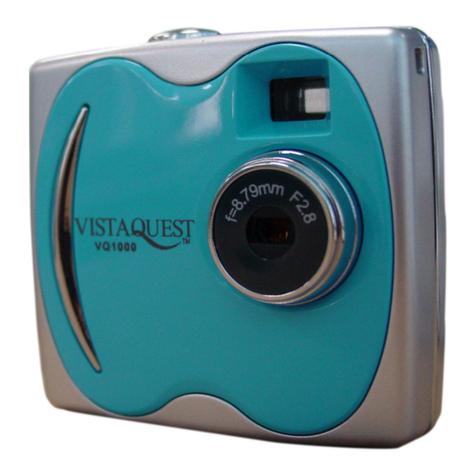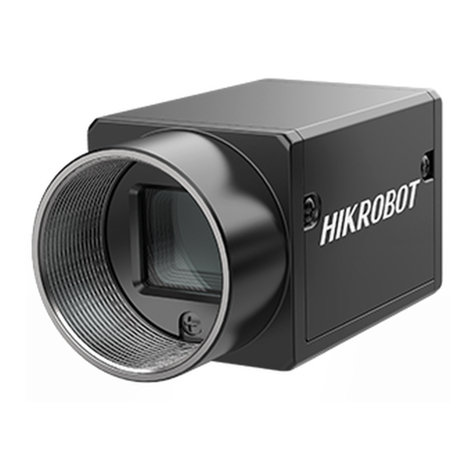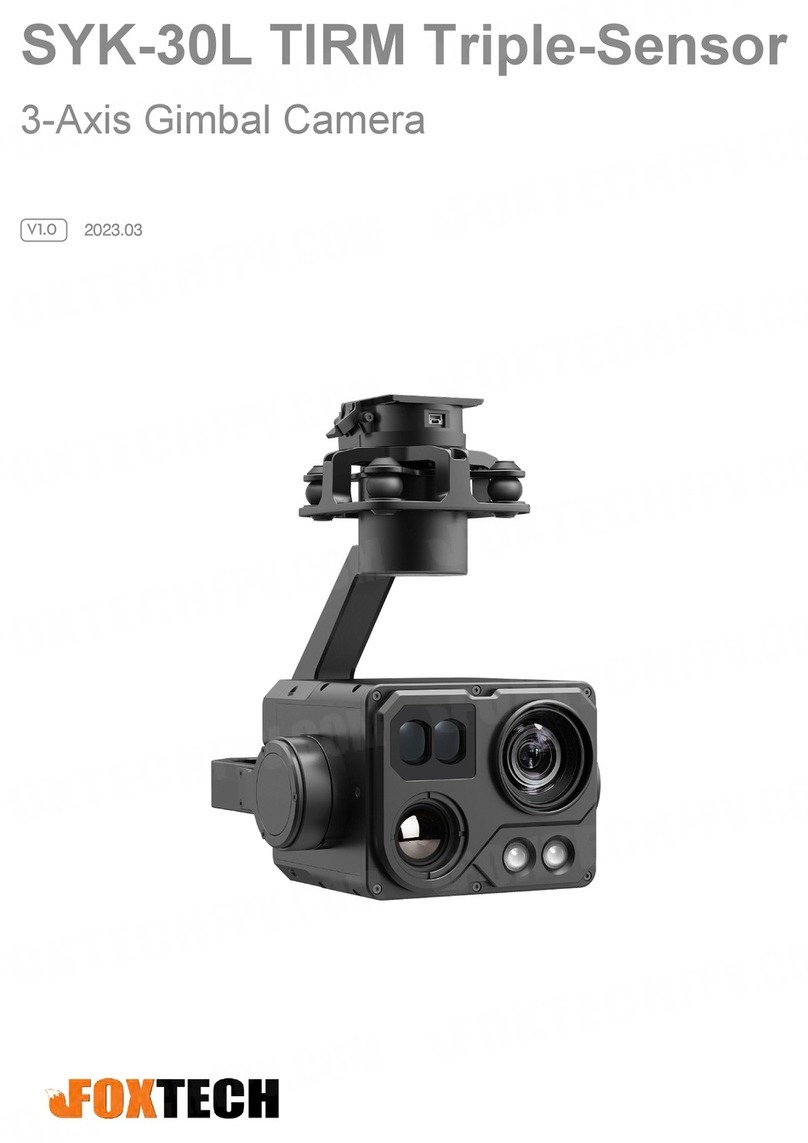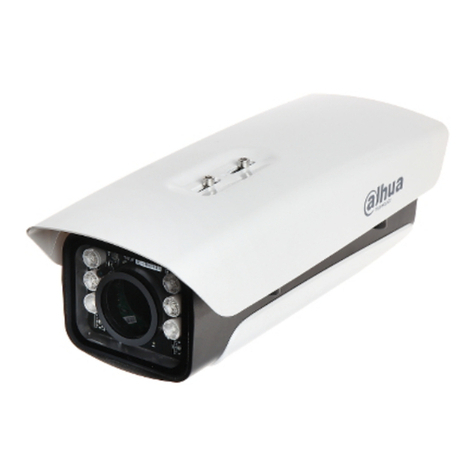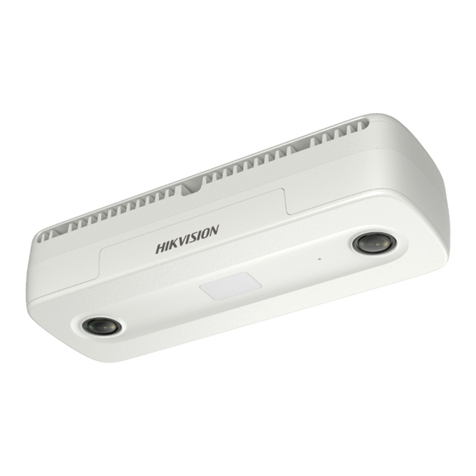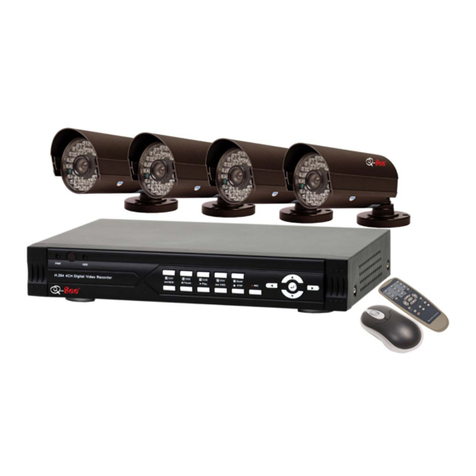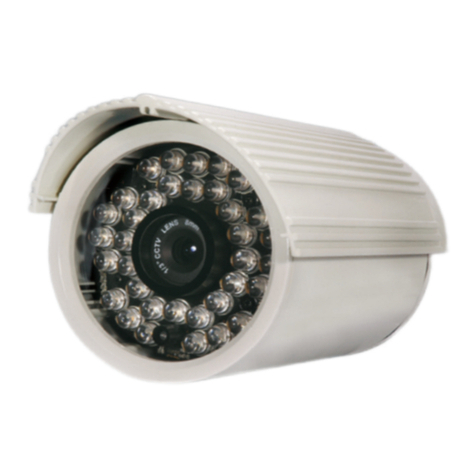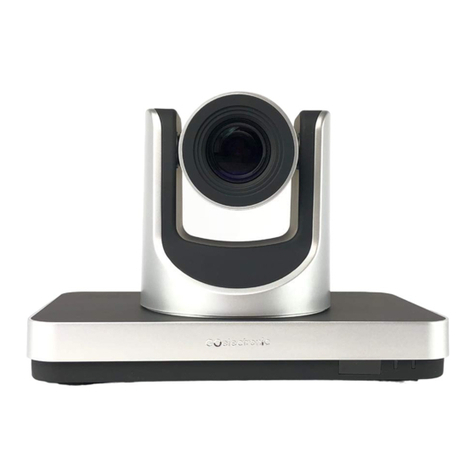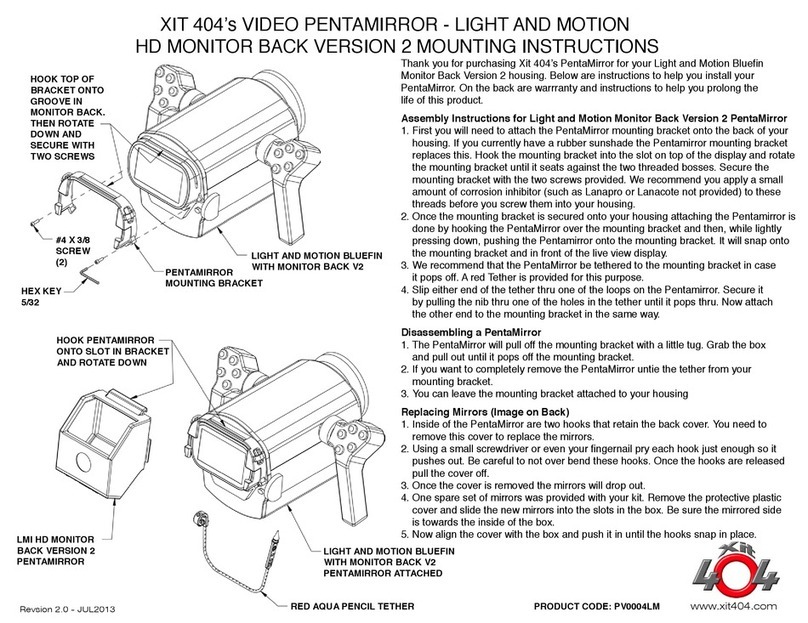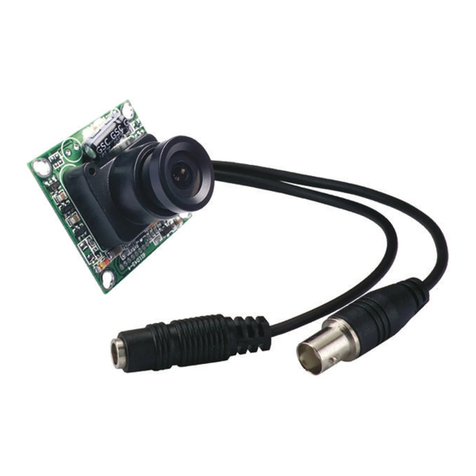Auricon Cinevoice CM-72 Owner's manual

TECHNICAL INSTRUCTION
F.4
Auricon Cinevoice 16-mm
Motion-picture Camera
First issued September
1960

Instruction
F.4
AMENDMENT RECORD
Amendment
Sheet
No.
F.4-1
Date
I
--
i
iC5
b-~\.La
1
1
F.4-2
I
1
Initials
-
F.4-3
1
F.44
,
I
I
1
Date Amendment
Sheet
No.
1
Init ials

Instruction
F.4
CONTENTS
SECTION
1
SECTION
2
SECTION
3
SECTION
4
SECTION
5
SECTION
6
INTRODUCTION
...
...
...
...
...
...
ELECTRO-MECHANICAL ASSEMBLY AND ATTACH-
MENTS
...
...
...
...
1
.
General Description of Camera
...
2
.
Motor ~ontrol'andSupply
...
...
3
.
Connections to Camera
...
...
4
.
Viewfinder
...
...
...
...
5
.
Lenses
...
...
...
6
.
Lens Hoods and'Filtersm
.
'
...
...
7
.
Magazines
...
...
...
...
ROUTINE MAINTENANCE NOTES
1
.
General
...
...
...
...
...
2
.
Dismantling and Reassembly Procedure
1
.
Dismantling
...
...
...
2
.
Reassembly
...
...
...
SOUND APPARATUS
...
...
...
1
.
Introduction
2
.
AM
151502.
ark
I:
~dneralDiscription
1
.
Connections to Amplifier
...
.
...
3
AM
151502.
Mark
11
Equipment
AM
151502:
TEST SPECIFICATION
...
1
.
Voltage and Current Measurements
...
2
.
Record Amplifier
...
...
...
3
.
Bias Oscillator
...
...
...
...
4
.
Monitor Amplifier
...
...
...
5
.
Playback Head Amplifier
... ...
6
.
Metering Facilities
... ...
...
ALIGNMENT INFORMATION
...
1
.
Sound System Lining-up Procedure
2
.
Channel Test
...
... ...
...
APPENDIX A
.
LIST OF ITEMS FORMING CINEVOICE CAMERA
...
CHANNEL
... ...
...
...
...
...
Page
1.1
2.1
2.1
2.5
2.5
2.5
2.5
2.6
2.6
3.1
3.1
3.1
3.1
3.1
4.1
4.1
4.2
4.3
4.4
5.1
5.1
5.1
5.2
5.2
5.3
5.3
6.1
6.1
6.2

Instruction
F.4
ILLUSTRATIONS
IN
TEXT
Fig
.
1.1
Fig
.
2.1
Fig
.
2.2
Fig
.
2.3
Fig
.
2.4
Fig
.
2.5
Fig
.
2.6
Fig
.
2.7
Fig
.
4.1
Fig
.
4.2
Fig
.
4.3
Fig
.
4.4
Fig
.
4.5
Fig
.
4.6
Fig
.
5.1
Fig
.
5.2
Auricon Cinevoice Camera
...
...
...
...
Auricon Cinevoice Camera
:
Exploded View
... ...
Mechanism Plate
...
...
...
...
...
...
Motor. with Governor Control Cover-plate removed
...
Cut-away View of Main Shaft
...
...
...
...
Cut-away View of Shutter and Film-transport Mechanism
Front View of Camera. with Lens Turret removed
...
Film Lacing Diagram (Single Sound-head Version)
...
Top View of AM151502. Mark
I.
with Cover removed
...
Bottom View of AM151502. with Cover removed
...
AM151502. with Covers removed
...
... ...
...
AM151502. Mark
I
.
Internal View
...
...
...
AM151502. Mark
I
.
Block Schematic Diagram
...
.
...
AM151502. Mark
I1
Internal View
...
...
...
Test Circuit for AM151502
...
...
...
...
Test Circuit for playback Head Amplifier of AM151502: Mark
I1
DIAGRAMS AT END
Page
1.1
2.2
2.3
2.3
2.4
2.4
2.4
2.5
4.1
4.1
4.1
4.2
4.3
4.4
5.1
5.3
Fig
.
I
AM151502 Recording Amplifier
Fig
.
2 AM151502 Bias Oscillator and Monitor Amplifier
Fig
.
3 AM151502 Mark
I
:
Wiring Diagram
Fig
.
4 AM151502: Playback Head Amplifier
Fig
.
5 AM151502 Mark I1
:
Wiring Diagram

Technical Instructions Instruction
F.4
Television Volume
3
e
AURICON CM-72 CINEVOICE
16-mm
MOTION-PICTURE CAMERA
SECTION
1
INTRODUCTION
The Auricon CM-72 Cinevoice camera as used
within the BBC is a cine camera using 16-mm
stock running at 25 frames per second, with a fixed
exposure time of 1/50 sec approximately; it has
also facilities for recording a combined magnetic
sound track. The camera and associated equip-
ment is light, and readily transportable. It uses
400-ft film magazines, and operates from a d.c.
supply at 12 volts. The camera has a three-lens
turret for standard C-mount lenses,and a parallax-
corrected turret viewfinder is normally fitted. The
finder is an integral part of the side door of the
camera, but this door can be replaced by a plain
door when a lens which has an integral viewfinder
arrangement is used. The sound apparatus is
battery-operated, and housed in a single box which
has a shoulder strap so that the equipment can be
operated at hip level.
The equipment is normally carried in two cases,
one housing the camera and magazines, and the
other the sound equipment and miscellaneous
items. The items comprising a complete channel
are listed in the Appendix.
The camera as at present used by the BBC has
been extensively modified, and differs appreciably
from the basic camera. Use is sometimes made of
similar cameras obtained from other organisations,
and these cameras may differ somewhat from those
owned by the Corporation. A survey of the
development of the successive modifications to the
e
basic camera is given below, and this indicates the
other versions of the camera which may be met.
The Cinevoice camera as manufactured is design-
ed to operate with 100-ft daylight-loading spools
which are housed within the body of the camera.
The motor is designed for operation from 117-volt
a.c. power supplies; 50-c/s and 60-c/s versions of
the motor are fitted according to requirements.
Additionally the motor may be of the constant-
@
speed or synchronous type as required. Operation
from batteries is obtained by means of a portable
power supply unit (PS-14), four versions of which
are available to suit inputs at
6
or
12
volts and
provide outputs at 50 c/s or 60 c/s. The basic
version of the camera can be obtained for single-
lens mounting or with a three-lens turret. The
sound system may be combined optical variable-
area, combined optical variable-density or com-
Fig.
I.
I.
Auricon Cinevoice Camera

Instruction
F.4
Section
1
bined magnetic stripe, and the corresponding
sound amplifiers areRA-31-7A (optical)and NR-25
(optical, with noise reduction) or MA-10(magnetic).
All three types of amplifier are operated from
internal dry batteries.
For professional use many of the cameras as
originally produced aremodified by an independent
company. This modification entails removal of the
top section of the body, and the fitting of
a
top
plate on which a standard 400-ft Mitchell magazine
is mounted. Two variants of this type of camera
exist, one with a slipping-belt drive for the take-up
spool, and one with an additional 117-volt motor
for the same purpose. Modified cameras of this
type are used extensively for newsreel work.
For BBC use a further series of modifications
is made. The chief of these involve a change to
operation with a 12-volt d.c. supply.
A
12-volt
motor replaces the 117-volt motor, and the drive
to the take-up spool is via a slipping clutch, and a
belt. The optical sound-head equipment is removed,
and in the space left a magnetic sound-recording
head is mounted. To minimise wow and flutter a
secondary sprocket drive is inserted between the
intermittent film pull-down mechanism and the
sound-head, and a flywheel-loaded roller and com-
pliance arms are used in the film path. Tocomplete
the modification a transistor sound-recording
amplifier (AM151502) is used, operating from
internal batteries. This is designed to work with
the standard BBC range of microphones.
A further modification may be met, in the addi-
tion of a reproducing head to the camera. When
such a head is fitted the amplifier used is a Mark
I1
version of the AM151502. The description of the
camera which follows is applicable to the single-
head version only, although both versions of the
AM151502 amplifier are described.
Two different basic versions of the camera are
used by the BBC. Whilst mechanical construction
is similar in the two models, the later one has a
larger lens-turret plate. The body castings also
differ in that the earlier model is straight-sided,
whilst the later version is flared, on one side to
accommodate the new lens-turret. The later ver-
sion of the camera is shown in Fig. 1.1. Apart
from these differences the two versions are similar,
and the following description applies to both.

Instruction
F.4
SECTION
2
ELECTRO-MECHANICAL ASSEMBLY AND ATTACHMENTS
2.1
General Description of Camera
The body of the camera is a single casting
(7,
Fig. 2.1), forming the front, bottom, back and
one side of the unit. The door on the open side of
the body (8, Fig. 2.1) is held in place by captive
screws, and gives access to the film-transport
mechanism and the film gate. Two versions of the
door are available, that shown in Figs.
1.1
and 2.1
being a plain door which is fitted when using
lenses having integral viewfinders. The other
version has a moulding carrying a turret viewfinder.
The top of the body is closed by two plates, one
serving as a magazine platform
(6,
Fig. 2.1), and
the other as a cover for the motor compartment
(3, Fig. 2.1). The body is lined with sponge rubber
to reduce sound radiation from the camera.
Within the body is a main vertical dividing
member, the mechanism plate (5, Fig. 2.1), shown
in Fig. 2.2. This plate is attached to the main body
by three screws, with rubber grommets between
the screws and the mechanism plate. Attached to
the front of the plate is a sub-assembly comprising
the lens turret and film aperture plate, shown
detached at
1
1, Fig. 2.1. This sub-assembly is held
in place by two screws, which are accessible
through the lens-mounting holes when the turret
is rotated to a position intermediate to any of its
stop positions. The screws extend through a
mounting plate on which the film aperture plate is
supported.
The rear face of the turret is undercut to admit
a circular raised portion of the mounting plate,
and spaced at 120-degree intervals around this
raised portion are radial slots. Seated in each slot
is a disk to which radially outward thrust is applied
by a W-spring located in an edgewise groove.
These three disks bear on the rim face of the turret
undercut, and act as bearings when the turret
is rotated. At stop positions, the disks seat in
arc-shaped indentations to lock the turret in
place.
In later models the turret and mounting plate
are concentric, the radius of the raised portion of
the plate being only slightly smaller than that of
the turret. Motion of the turret away from the
plate is prevented by a flanged phosphor-bronze
retainer surrounding its periphery. The outer rim
of the retainer is grooved to hold a rubber ring,
which forms a light-tight resilient seal between the
turret assembly and the camera body, and also
reduces appreciably the radiation of noise from the
mechanism.
In early models, the raised portion of the mount-
ing plate is off-centre and appreciably smaller than
the turret. A flange retainer is not used. The
turret is retained in position by a screw passing
through the centre of the turret and the centre of
the raised portion of the mounting plate, with
spring washers between the head of the screw and
the turret. The turret is thus off-centre with respect
to the mounting plate. The resilient rubber seiling
rlng fits in a groove around the periphery of the
mounting plate.
Fixed to the mechanism plate are a motor plate
(4,
Fig. 2.1 and 5, Fig. 2.2) and a flywheel plate
(8. Fig. 2.2). These lie in the same plane, parallel
with the mechanism plate, on the side remote from
the film-transport mechanism. The motor plate
carries the driving motor (1, Fig. 2.I), a number of
shaft bushes, and a mounting for the film-footage
counter (2, Fig. 2.1). On the flywheel plate is
the magnetic sound-recording head (I I, Fig. 2.2)
together with the flywheel roller
(9,
Fig. 2.2),
compliance arms (12, 13 Fig. 2.2) and a guide
roller (10, Fig. 2.2), all of which protrude through
clearance holes in the mechanism plate.
The driving motor is of the permanent-magnet
type, fitted with a governor and identical with the
motor used in the early L2 tape recorder. Itssupply
is connected via a three-pin recessed socket and
made through a single-pole switch in the positive
supply lead. The motor is fitted with a bracket,
which is in turn fastened to the motor plate by
four screws. Rubber grommets are interposed
between the bracket and the fixing screws to pro-
vide a resilient mounting (see Fig. 2.3).
The motor governor is of the centrifugally-
operated (Creed) type, arranged to control the
motor current. For this purpose two resistors
connected in series with the armature windings are

Instruction
F.4
Section
2
carried by a plate on the armature. In parallel
with these resistors are spring-loaded contacts
which remain closed until the motor runs up to
speed. The centrifugal force acting on two weights
then forces the contactsopen, and with the resistors
in circuit, the motor speed falls. This causes the
contacts to close again, and the motor speed rises.
Thus the motor speed hunts between fairly narrow
limits, producing a substantially constant-speed
When the plate isremoved, the motor can be rotated
by hand to expose two screws that provide for
individual adjustment of the spring tensions. One
of the screw heads can be seen at
5,
Fig.
2.3.
Drive from the motor shaft is transmitted to a
large gear wheel via a cushion drive. This drive
can be seen in Fig.
2.3.
A
collar, clamped to the
motor shaft, is coupled to a gear wheel, which is
free to rotate on the motor shaft, via two spring
Fig.
2.1.
Auricon Cinevoice Camera: Exploded View
I.
Motor
2.
Film-footage Counter
3.
Motor Compartment Cover
4.
Motor Plate
5.
Mechanism Plate
6.
Magazine Platform
7.
Main Body Casting
8.
Door
9.
Large Gear Wheel
10.
Flywheel on Main Shaft
I
I.
Lens Turret Sub-assembly
drive. The governed speed can be altered by ad- arms. Limit stops are provided by a fixed pin in
justing the tension of the contact springs, and this the face of the collar projecting into a cut-away
can be done on removing the plate giving access to portion of the boss on the gear wheel. If the gear
the governor mechanism, as shown in Fig.
2.3.
wheel attempts to rotate too far with respect to the

Instruction
F.4
Section
2
collar, this pin strikes the face of the cut-away
portion and prevents further relative rotation.
The large gear wheel (9, Fig. 2.1) has a central
boss, and is free to rotate on the main shaft (see
Fig. 2.4); the bush also carries the drive pulley
for the belt drive to the take-up spool, referred to
later. The large gear wheel drives a flywheel (10,
Fig. 2.1), secured to the main shaft, via a resilient
coupling. The flywheel has four holes through its
Fig.
2.2.
Mechanism Plate
I. Secondary Sprocket 2. Main Sprocket 3. Pressure
Plote
4.
Spring-pressure Arm
5.
Motor Plote
6.
Film-
footage Counter
7.
Flywheel
8.
Flywheel Plote
9.
Fly-
wheel Roller 10. Guide Roller I I. Magnetic Sound-
recording Head I2 and 13. Compliance Arms
face, and two of these are fitted with rubber
grommets engaging pins on the face of the large
*
gear wheel. The main sprocket (2, Fig. 2.2), is
fixed solidly on the main shaft, and the secondary
sprocket (I, Fig. 2.2), is driven via a
1
:
I
gear
train as shown in Fig. 2.4.
The large gear wheel also drives the shutter and
intermittent film-transport mechanism via a gear
wheel on a lay shaft, which can be seen in Figs. 2.5
and at 9, Fig. 2.6. The lay shaft carries a helical
gear
(8,
Fig. 2.6), which provides the drive to the
shutter and the intermittent film pull-down
mechanism. The shutter is fixed to a second helical
gear wheel meshing with the first, and is mounted
on a pin (4, Fig. 2.6) in the mechanism plate; the
pin also serves to locate the lens turret. With
suitable meshing of the helical gears the film-
transport action is masked by the shutter inter-
cepting the light path.
In the face of the helical gear
(8,
Fig. 2.6) on the
lay shaft is an off-centre hole to accommodate a
peg on a claw mechanism
(7,
Fig. 2.6) providing
the intermittent film drive as the helical gear
wheel rotates. After the pin on the helical gear
wheel has passed top dead-centre, the claw is
progressively advanced through a slot in the film
aperture plate into engagement with a film
sprocket-hole. During further movement the claw
draws the film downwards, until it leaves the
sprocket hole as the pin approaches bottom dead-
centre. During the return of the pin to top dead-
centre the claw is reset for a further traversing
motion. The claw is part of an arm with its lower
end moving in a slot (6, Fig. 2.6) machined in the
mechanism plate. The mechanism-plate slot is
bridged by a guide pin passing through an elongated
Fig.
2.3.
Motor with Governor Control Cover-
plate removed
I.
Limit Pin 2. Spring Arms
3.
Collar (fixed)
4.
Gear
Wheel (free)
5.
Governor Speed-adjusting Screw
slot in the arm and this provides for correct motion
of the claw.

Instruction
F.4
Section
2
Bearing on the back of the film are the edges of
two plates
(5,
Fig. 2.6) with which pressure is
Fig.
2.4.
Cut-away View of Main Shaft
applied at both sides of the sprocket-hole track.
The plate edges extend over the range of action of
the claw and assist in obtaining uniform pull-down.
The film take-up spool is belt-driven from a
pulley
(3,
Fig. 2.6) coupled to the large gear wheel
Fig.
2.5.
Cut-away View of Shutter and Film-
transport Mechanism
via a slipping clutch. The components of this
clutch can be seen in Fig. 2.4. The central boss of
the large gear wheel is threaded at one end and on
it the pulley is free to rotate, although clamped
between two felt disks as shown. The clutch
tension is adjusted by the threaded disk which bears
on the outer felt disk.
A
channel-section retainer
for the belt is fixed to the motor plate, and this
ensures that the belt when slack is retained in
approximately the correct position. The belt
passes through two slots in the motor cover top-
plate and over the external drive pulley for the
take-up spool of the film magazine.
Fig.
2.6.
Front View of Camera, with Lens Turret
removed
I. Large Gear Wheel
2.
Gear Wheel operating Film-
footage Counter
3.
Drive pulley for Take-up Spool Belt
Drive
4.
Shutter Mounting Pin
5.
Sprocket-hole Trock
Pressure-plates
6.
Slot in Mechanism Plate occommodat-
ing Clow Arm
7.
Film Clow
8.
Helical Gear
9.
Shutter-
driving Gear an Lay shaft
At the end of the main shaft, remote from the
main sprocket, is a small gear wheel driving a
larger gear wheel
(2,
Fig.
2.6);
the latter is mounted
on the motor plate. This gear wheel carries a
pivoted boss to which is attached a spring-loaded

Instruction F.4
Section
2
link, the whole forming a reciprocating mechanism
for operating the film-footage counter.
The path of the film through the camera can be
seen from Fig. 2.7. The film is supported off the
surface of the aperture plate by two vertical rows
of steel balls. These are inserted from the rear of
the plate and fixed so that they stand proud of the
front to the extent of 4 mils. On the opposite face
of the film a spring-loaded plate (3, Fig. 2.2) is
used to apply pressure in line with the two rows of
steel balls. The plate also carries a single,sunken,
steel ball above the gate aperture, to apply pressure
at the centre of the film and thus prevent it from
bowing.
Fig.
2.7.
Film Lacing Diagram (Single Sound-
head Version)
Tominimise wow and flutter on the sound track,
the film path past the recording head embraces
two compliance arms (12, 13, Fig. 2.2) and a fly-
wheel-loaded roller
(9,
Fig. 2.2). The roller and
the flywheel
(7,
Fig.
2.2)
are at opposite ends of a
shaft carried in a twin-bearing on the flywheel
plate. The flywheel plate also carries the sound
recording head and the compliance arms. The latter
are slotted, to engage pins in the mechanism plate.
In lacingthe film care must be taken to ensure that,
under equilibrium conditions, the limit pins are as
near to the centre line of the slots as possible.
2.2 Motor Control and Supply
The motor is driven by a 12-volt battery. The
battery leads terminate in a three-pin Cannon plug
which engages with a socket (XL-3-14) at the side
of the camera. The motor control-switch, at the
rear of the camera, is connected in series with the
positive pole of the battery supply.
2.3
Connections to Camera
The camera has two connectors, one for the
motor battery-supply and the other for the signal
connections to the recording system and the head-
phones jack.
The battery plug is type XL-3-14, and connec-
tions to the pins are as follow:-
Pin
Circuit
1 12v
+
2 12v
-
3 Frame
If a recording head only is fitted, the signal
socket is a four-way type XL-4-13. Connections
to the pins are as follow:-
Pin
Circuit
I)
Headphones
2
3,
Recording head
4
If recording and reproducing heads are fitted,
the signal socket is a six-way type EM-6-13.
Connections to the pins are as follow:-
Pin
Circuit
)
Reproducing head
2
3 Recording head
Headphones: Pin
5
}
connected to frame
6
Recording head
2.4 Viewfinder
The viewfinder is a standard Bell and Howell
turret having four positions, which hold view-
finder lenses appropriate to the range of lenses in
use. The viewfinder is housed in an enclosure
which forms an integral part of the door of the
camera. Parallaxcorrection is provided by adjusting
the angle of sight of the viewfinder lens relative to
that of the main lenses in use. Adjustment of
parallax correction is made by varying the position
of the viewing tube which moves horizontally in a
slot having a distance scale along the edges.
2.5 Lenses
A
range of Taylor, Taylor and Hobson lenses
in C-mounts is available for use with the camera,
and zoom lenses are also available. The normal
complement of lenses depends on local require-
ments, and is usually about six. If a zoom lens is
available, the complement is usually smaller. The

Instruction
F.4
Section
2
range of focal lengths of fixed-focus lenses in
inches is 0.7, I,
2,
2.8,
4,
and 6. The zoom lens is
normally the Angenieux 17-68 mm type, and, when
used, the lens complement is usually completed by
a 1-in. lens (wide angle) and a 6-in. lens (narrow
angle).
Both the Angenieux and Berthiot zoom lens
have integral viewfinders. The viewing tube
extends to the side and rear of the lens, and would
foul the normal viewfinder supplied. When a
zoom lens of this type is used, the camera door
carrying the viewfinder is replaced by a plain door
which does not obstruct the lens viewfinder tube.
The door has additionally a bracket to support
the viewfinder tube, to ensure accurate registration
of the viewfinder image with that in the camera
gate.
On a number of cameras where
a
zoom lens is
frequently used the lens turret is locked in one
fixed position. In earlier models the turret plate
and the mounting plate are drilled to take
a
nut
and bolt which prevent rotation. In later models
the turret mounting plate has a tapped hole visible
through the highest-position lens holder (see Fig.
1.1). A bung with a threaded spigot fits into this
unused lens holder, the thread of the spigot
engaging the tapped hole. When screwed fully
home, the bung prevents rotation of the turret,
and so ensures that it does not slip under the weight
of the lens or the torque of the operating lever.
2.6
Lens Hood and
Filters
A range of lens hoods and filters are available;
these are attached to the lens direct. The comple-
ment of these items is determined by local require-
ments.
2.7
Magazines
The magazines are standard 4004 Mitchell
magazines, modified by a change to the external
drive pulley of the take-up spool.
The front of the foot of the magazine has a toe
portion which engages with a retainer at the front
of the locating groove of the camera magazine
platform.
A
singlecaptive screw projecting through
the locating groove fastens the magazine in the
operating position.
Entrance to the separate feed and take-up com-
partments of the magazine is gained by releasing
the individual covers, which have threaded rims.

Instruction
F.4
SECTION
3
ROUTINE MAINTENANCE NOTES
3.1
General film gate aperture. Set the sprocket so that the
The regular maintenance required comprises shutter blade is not visible and the sprocket is
cleaning and oiling. The camera should be cleaned mid-way between the positions it takes up when
at frequent intervals to remove dust and film the shutter is just ovening and just closing.
- -
emulsion. Particular care should be exercised to
see that the sprockets and gate are kept clean.
3.
Rotate the lens turret until the two mounting-
The balls which apply pressure to the film in its plate retaining screws are visible. These are
passage through the gate should be kept scrupu- situated in the vertical line of the mechanism
lously clean. Obstinate deposits of dust and emul- plate.
sion which cannot be removed by brushing with a
soft-haired brush or cloth should
be
attacked with
a sharpened soft-wood tool. Under no circum-
stances should a metal tool or knife be used for
this purpose.
Cameras and viewfinder lenses should be cleaned
as required with a soft-hair brush or a cloth of
well-washed cambric or fine linen. Additionally,
the threads of lens mounts should be kept clean
and free of dust particles.
4.
Release and remove the turret mounting screws.
Ease the turret assembly forward gently;
pressure may be applied to the rear rim of the
mounting plate. If the shutter blade has been
correctly positioned, the turret assembly will
slide clear leaving the shutter on its mounting
pin. If, however, the shutter blade has been set
incorrectly, it will be fouled by the film gate as
the turret assembly is withdrawn. Remove the
shutter.
Oiling is required at five points only, accessible
when the side door
of
the
camera
is opened. The
5.
Release the two remaining screws fastening the
oilingducts are indicated by red spots at the mouths mechanism plate to the camera body, and
and the correct lubricant is standard machine oil. remove the mechanism plate by lifting it
Care should be taken to ensure that the nylon vertically from the body. As the body is lined
pinions are at all times free of oil, as otherwise with sponge rubber, there may be some fric-
noisy running will occur. tional resistance. As the mechanism plate is
If the motor governor requires adjustment, care lifted, the shutter mounting pin will tend to foul
must be taken to ensure that the settings of both the edge of the body, so that it is necessary to
spring-tension adjusting screws are altered by tilt the mechanism plate to complete the with-
equal amounts. drawal process.
3.2
Dismantling and Reassembly Procedure
3.2.1 Dismantling
The procedure for dismantling the camera is:
1.
Take off the camera door by releasing the two
captive screws. Take off the motor compart-
ment cover. Release the top screw fastening
the mechanism plate to the bracket of the top
cover. Take off the top cover, by releasing the
four Allen screws. Remove the film-gate
pressure plate.
2.
Rotate the main sprocket by hand and observe
the rotation of the shutter blade through the
3.2.2 Reassembly
The procedure for reassembly is as follows:
1.
Insert mechanism plate into camera, tilting the
plate forward if necessary to allow the shutter
mounting pin to clear the body. When the
mechanism plate is in position, insert and
tighten the two bottom fixing screws.
2.
Replace the top cover, and insert and tighten
the four Allen screws. Locate and tighten the
fixing screw between the mechanism plate and
the bracket on the top cover.
3.
Place the shutter and spacing washer on the
shutter mounting pin, and move the shutter

Instruction
F.4
Section
3
along the pin until the helical gears are fully
meshed. Check the phasing of the shutter by
rotating. the main sprocket, and observe the
shutter blade motion. As the shutter blade
rises to the position of the film gate aperture
the blade must not foul the film claw mechanism,
and should travel upwards so that the aperture
is covered before the claw moves into the film
path. Correspondingly, attheend of the shutter-
closed period the claw should notfoul the shutter
blade, and should be clear of the film path
before the aperture is uncovered. If necessary,
readjust shutter gear meshing to achieve this.
4.
Set the shutter so that
it
does not foul the edge
of the lens turret on fitting. Replace the lens
turret, and insert and tighten the two fixing
screws. On later models the rubber ring around
the turret may be placed in position after the
turret has been replaced, and worked home with
the fingers. On earlier models the turret over-
laps part of the rubber-ring seating, and the
ring must be fitted to the turret before reassem-
bly.
5.
Replace the motor compartment cover, re-
threading the take-up pulley belt through the
slots in the cover.
6.
Replace the camera door.

Instruction
F.4
SECTION
4
SOUND APPARATUS
4.1
Introduction
pre-set gain control for the headphone output, a
The sound apparatus comprises a magnetic- selector switch for the panel meter and a pre-set
recording amplifier (AM151502) and associated control of meter sensitivity. By means of the
equipment, designed to feed a recording head and
Fig.
4.2.
Bottom View of
AM15/502,
with Cover
cameraman's headphones at the camera. The
e
amplifier is fully transistorised, and works from an
internal 12-volt battery. The amplifier case has a
shoulder strap to enable the sound recordist to
carry and operate the unit with the controls at hip
level. Provision is made for mixing the outputs
of two microphones; the input circuits are
designed to operate with microphones of
30
ohms
impedance. An input at zero volume can also be
accepted, this being fed into the input of the
second microphone channel via an attenuator pad.
In addition to the outputs to the camera, there is a
Fig.
4.1.
Top View
of
AM
15/502,
Mark
I,
with
Cover removed
headphone-monitoring output from the amplifier,
and a low-level output for feeding an
L2
tape
recorder.
-
removed
\
i
selector switch the meter can be set to check the
bias current and battery voltage or to function as a
volume indicator.
.
-
Two versions of the amvlifier AM151502 exist.
Mark
I1
differs from
ark
I
by the addition of a
playback head amplifier which is used when a
Fig.
4.3. AM15/502,
with Covers removed
revroducina head is fitted on the camera.
?he cor&ols at the amplifier comprise
Gain
In addition the Mark I1 models have
a
direct/
controls for the two input signals, an
On/Of/LF
replay switch to feed the monitor amplifier from
Cut
switch, a
Set
Bias
control for the h.f. bias, a either the signal to the recording head or the signal

Instruction
F.4
Section
4
from the reproducing head.
The overall dimensions of the amplifier case are
103 in. by
8+
in. by 3+ in., and its weight with
battery fitted is
83
Ibs. Top and bottom views of
the amplifier are shown in Figs. 4.1 and 4.2, and a
view of the amplifier with the case removed is
given in Fig. 4.3.
The following description applies to the Mark
I
version; details of differences in the Mark
I1
version are given later.
4.2
AM151502 Mark I. General Description
The circuit components of the AM151502 are
mounted on three printed-circuit cards, designated
Bias Oscillator
card,
Record Amp.
card and
Monitor
AmpliJier
card. Additionally, controlsand switches
are mounted on the front panel of the unit. Wiring
between the printed cards and other components
is by means of flexible connectors made up in
cable forms. The layout of the cards and other
components can be seen in Fig. 4.4. The battery
Fig.
4.4.
AM15/502,
Mark
I.
Internal View
I.
Bias Oscillator Card
2.
Record Amplifier Card
3.
Monitor Card
comprises eight 1.5-volt (U2-size) cells which are
housed in a compartment at the bottom of the case.
The unit has top and bottom covers enclosing the
front panel and the battery compartment respect-
ively, each cover being held in place by two captive
screws.
A block schematic diagram of the sound appara-
tus is shown in Fig. 4.5. Detailed circuit diagrams,
component layouts, and wiring details are shown in
Figs.
1
to 3. The two microphone circuits are
brought to three-way recessed input plugs, and
each feeds an input transformer. The inputs are
not earthed, and designed to work from a source
impedance of 30 ohms. Across
Input
2
is bridged
the output of an attenuator pad, which is fed from
the
Line
input jack. The pad attenuates a zero-
volume input signal to a level suitable for feeding
the microphone amplifier.
The outputs from the microphone transformers
are fed to individual single-stage amplifiers, and
the outputs of these amplifiers are fed to the sliders
of the
Gain
I
and
Gain
2
controls. The outer ends
of the gain controls are common and the combined
output is fed to a further single-stage amplifier.
This amplifier stage has a frequency response
rising at high frequencies to provide part of the
pre-emphasised recording characteristics. The out-
put from this stage is fed to one pole of the
On/
Ofl/LF Cut
switch. At the
On
and
Off
positions
the signal is fed directly to the subsequent stage,
and in the
LF Cut
position a low-value coupling
capacitor is brought into circuit to attenuate low
frequencies.
The subsequent amplifier section is a two-stage
amplifier feeding the recording head. Negative
feedback is avvlied over the two stages. and a
shunt capacit& is used in the feedbaci chain to
provide a frequency response rising at high fre-
quencies. The overall high-frequency boost pro-
vides the required recording characteristic.
The output to the recording head at the camera
is fed via two pins of a four-way recessed socket.
The bias signal is injected in series with the a.f.
signal by means of a coupling winding from the
bias oscillator coil; the bias oscillator employs
two transistors in a push-pull circuit. A low-
impedance path for the bias signal is provided by
C16; R33 serves to isolate the a.f. amplifier from
the bias supply. The a.f. signal current through
the head flows in resistor R10, and the voltage
thus developed is fed to the monitoring amplifier.
This is a three-stage amplifier providing the head-
phone-monitoring outputs. The amplifier has a
falling high-frequency response to offset the high-
frequency boost employed in the recording chain.
The level of the output is controlled by the
Monitor
control, from the slider of which the signal is fed
to the
Phones
jack, and also to the monitoringjack
at the camera, via the four-way connector. The
Phones
jack has an auxiliary contact which breaks
the battery supply to the amplifier when the head-
phone plug is removed from the jack.
The output of the a.f. amplifier is also fed to a
single-stage amplifier feeding a bridge rectifier.
The output from this bridge is connected to the
panel-mounted meter at the
V.I.
position of the
meter control switch, and thus gives an indication

Instruction
F.4
Section
4
Page
refaaued
November
1960
of the recorded signal volume. The meter..-isnot
scaled, but has a green sector. For correct opera-
tion the meter pointer should kick up to the middle
of thegreen sectoronsignalpeaks. Asthe amplifier
feeding'the bridge rectifier doesnot have
a
logarith-
mic characteristic the meter-pointer movements
are different from those which would be obtained
on a
PPM.
from the input to the final a.f. amplifier in the
recording chain, through an attenuator pad feeding
ajack designated
L2.
Becauseof the high-frequency
boost applied to the a.f. signal in the preceding
stage, the attenuation of the output to the
L2
recorder is made to rise with increasing frequency,
by means of a shunt capacitor across the output;
the overall high-frequency response is thus-main-
Fig.
4.5.
AM/5/502,
Mark
I,
Schematic Diagram
The meter may also be used to check battery
voltage and the bias-signal magnitude. At the
Bat!.
position of the meter control switch the meter
is connected in series with a resistor to check the
battery voltage. The battery should be changed
when the meter reading falls below the edge of the
green sector. At the
Bias
position of the control
switch the meter indicates the magnitude of bias
signal developed across the lower section of the
Bias Meter
voltage divider (Fig.
3),
connected in
series with R9 (bias oscillator circuit of Fig.
2)
across the output to the recording head. In the
absence of modulation, the meter pointer should
be set to the lower edge of the green sector by ad-
justment of the
Set Bias
control. The
Bias Meter
control is pre-set so that this meter indication is
obtained when the bias voltage is at the optimum
value.
An output for an
L2
tape recorder is provided
tained substantially level. This output is taken
from a point,subsequent to the
LF
Cut
switch,
which is thus effective on the feed for an
L2
recorder. The output impedance of this signal
source is approximately
600
ohms.
Connections
to
Amplifier
In normal use a single four-way connector
couples the sound amplifier to the camera. The
four wires comprise two circuits, one carrying the
signal to the recording head and the other the feed
for the cameraman's headphones. The output is
taken via a four-way Cannon plug type
XL-4-14.
The circuits at the pins are as follow:
Pin Circuit
l)
Headphones
2
3,
Recording head
4

Instruction
F.4
Section
4
Microphone input signals are fed via 3-way
Cannon plugs type XL-3-14. Pin 1 is earthed, and
pins 2 and 3 are used for the signal input. The
signal to the L2 recorder is fed via a Bulgin jack
type J2, the line-input jack is Bulgin type 516, and
the headphone-output jack is Bulgin type 517.
AM15/502
Mark
11
The AM151502 Mark I1differs from the Mark I
in the following respects:
A playback head amplifier for the reproduc-
ing head is fitted.
A
directlreplay switch for the input to the
monitoring amplifier is fitted.
The four-way plugs, sockets and cable link-
ing the amplifier to the camera are replaced
by six-way elements. The two additional
leads are utilised to connect the reproducing
head to the replay head amplifier.
Fig.
4.6.
AM15/502,
Mark
11.
Internal
View
I. Bias Oscillator Card
2.
Record Amplifir Card
3.
Monitor Card
4.
Playback Head Amplifier Card
A circuit diagram of the playback head amplifier
is shown in Fig. 4, and an internal view of the
AM15/502, Mark 11, in Fig. 4.6. The output from
the reproducing head is fed to the input trans-
former T1, which feeds the transistor VT1. Tran-
sistors VTl and VT2 form a conventional two-
stage amplifier, with negative feedback applied
from the collector of VT2 to the emitter of VT1.
The feedback decreases at high and low frequencies
because of the effect of C5 and C6. By their use
the overall frequency response rises at high and
low frequencies, to equalise the reproducing-head
output characteristic. The output signal is taken
from the lower arm R14 of the potential divider,
R12 plus R14, connected to the collector of VT2.
In parallel with R12 is C8, which serves to increase
the output-signal amplitude at high frequencies.
The value of
C8
is chosen on test to provide for
variations in the high-frequency response of
different reproducing heads.
The output from the playback head amplifier is
fed to one pole of the change-over switch desig-
nated
Replay,
which feeds the input to the
monitoring amplifier. The other input to the switch
is taken from resistor R10, connected in series
with the recording head; see Fig. 4.5. The switch
thus enables the signal fed to the head to
be
com-
pared with that obtained on reproduction from the
film magnetic stripe.
Connections to the six-way output plug, type
EM-6-13, and the internal wiring arrangements
of the amplifier are shown in Fig.
5.
The circuits
to the pins of the six-way plug are as follow:
Pin
Circuit
I) Reproducing head output
2
3
Feed to record head
4,
Monitor headphone circuit
5
6
Feed
to record head

Instruction
F.4
SECTION
5
AM151502: TEST SPECIFICATION
The following operations provide a compre-
hensivetest for the individual units of the amplifier.
The apparatus required is as follows:
Tone source covering the range 50 c/s to
10 kc/s. Output impedance of 600 ohms.
Valve voltmeter capable of measurement over
the range 50 c/s to 10 kc/s, or an amplifier-
detector. For measurements at bias frequency
(60 kc/s approximately) an accurate valve volt-
meter or calibrated oscilloscope must be used.
Oscilloscope.
The apparatus should be connected as shown in
Fig. 5.1.
Monitor Amplifier
Emitter Voltage Total Current (mA)
VTI VT2 VT3
3.9 2.8 1.1 13.8
Tolerances
f
20 per cent,unlessotherwisespecified.
5.2 Record Amplifier
5.2.1 Gain
Set tone-source frequency to 1 kc/s. Remove
supply to bias oscillator. Set the gain control of
the channel in use to maximum, and the other gain
control
to
minimum. If both gain controls are set
na
I
man
I
4
lo
REC
*INPUT
I
HEAD
4
6
3
3-
AM1151502
SOURCE
+INPUT
2
VOLTMETER
F~/II
Fig.
5.
I.
Test
Circuit
for
AM
151502
5.1 Voltage and Current Measurements
Check that the battery voltage, on load, is 12.
Record Ampl$er Total
Emitter Voltage Current (mA)
VTI VT2 VT3 VT4 VT5
1-8 1.8 1.9 2.4 2.5 29
Bias Oscillator andModulation-meterAmplifier
Adjust Set Bias control to give 30 mV of bias
signal across the 1-ohm test resistor.
Emitter Voltage Collector Current(mA)
VT
1
VT2
+
VT3
3
-0
24.5
Playback Head Amplijier
Total Current:
1
mA
(f
50 per cent)
at maximum the gain will be reduced by 1 dB.
Connect
a
4.7-kilohm resistor across the
L2
Injack.
The position of the test points a,
GM,
etc. are
shown in Fig. 1.
Input and output signal levels are expressed
relative to 0.775 volts r.m.s.
Set the tone-source output to give a signal
amplitude of 3 mV r.m.s. (-48.5 dB) across the
1-ohm test resistor. The tone-source output and
levels at test points should
be
as given in the table
below.
Tone-source Level (dB) at Test Point
Output(dB)
L2
aC~lpqtIn
25.5 -67.547.5 -35 -36
-7
-24 -55
Tolerance for all readings is
-l
3 dB.

Instruction
F.4
Section
5
Connect tone-source output direct to
Line In
jack. Set tone-source frequency to
1
kc/s and set
output level to -12.5 dB. Set
Gain
1
to minimum
setting and
Gain 2
to maximum setting. Adjust
tone-source output to give a signal amplitude of
3 mV r.m.s. (-48-5 dB) across the I-ohm test
resistor. The tone-source output should be -12.5
dB
f
3 dB. N.B. There should be no connection
to the
Input 2
socket during this test.
5.2.2 Frequency Response
Set the gain control of the channel in use to
maximum, and the other gain control to minimum.
Set the
On/LF Cut/Of
switch to
On.
Set the
tone-source frequency to
1
kc/s. Set the tone-
source output to -35 dB approximately, and
adjust the tone-source output until the signal
amplitude across the I-ohm test resistor is -58 dB
(reference level). Connect a 4.7-kilohm resistor
across
L2 In
jack and note the signal level. Measure
the outputs across the I-ohm resistor and the
L2 In
jack at the frequencies given in the table below, and
check that the responses are as shown, within the
limits
f
2
dB.
Frequency
Relative Response (dB)
across I-ohm resistor
*These responses may vary owing to modificationsto the
amplifier to offset variations of response of particular
recording heads. Where such modifications have been made
the response limits are
4
dB above
6
kc/s
**
LF
Cut
capacitor
=
0.02
yF.
Repeat above test for the other input channel,
checking in the
On
position only.
5.2.3 Noise
Terminate
Input
I
in 30 ohms.
Set
Gain
I
to maximum setting, and
Gain 2
to
minimum. Measure the noise output at the
Out
and the
Mod.
terminals of the record amplifier.
These figures should be less than -52 dB and
-47 dB respectively.
Terminate
Input 2
in 30 ohms, and repeat above
with
Gain
I
set to minimum setting and
Gain 2
to maximum, and check noise outputs.
To obtain the signal-to-noise ratio, subtract the
levels measured at these points
(t
and
q)
respect-
ively in the test under 5.2.1. The values of the
signal-to-noise ratios at the
Out
and
Mod.
ter-
minals should be not less than 28 dB and 40 dB.
5.2.4 Distortion
Connect
a
40-dB amplifier and filter unit FHP/3
in series between the I-ohm test resistor and the
valve voltmeter. Adjust tone-source output so that
the signal level across the
I
-ohm resistor is
-46
dB.
Using test frequencies of 100 c/s and
I
kc/s, check
that the total harmonic distortion is less than 2
per cent
(
-34 dB).
5.3
Bias Oscillator
(a) Set
Bias Current
control to give maximum
output. Measure bias voltage across the
I
-ohm
test resistor; this should be greater than 38 mV.
Measure also the direct-current feed to the
oscillator (in series with the terminal
B (ADJ)
of the bias-oscillator card; this should be less
than 41 mA. Check the oscillator frequency:
this should lie between 40 kc/s and 60 kc/s.
(b) Set
Bias Current
control to give a bias voltage
of 30 mV across the I-ohm test resistor.
Check that the direct-current feed to the
oscillator is between 21 and 32 mA.
N.B. The record amplifier must be operating
during the measurements.
5.4
Monitor Amplifier
Disconnect input lead to the monitor card.
Connect a 10-ohm resistor in parallel with the
input and apply the output of the tone source to
the input through a series 600-ohm resistor.
5.4.1 Output Impedance
Set the tone-source frequency to 1 kc/s and
adjust the output of the tone source so that the
monitor output is 1 volt r.m.s. on open circuit.
Connect a variable resistor to the output, and adjust
its value until the output falls to 0.5 volt. The
resistance employed is then equal to the monitor-
Table of contents
